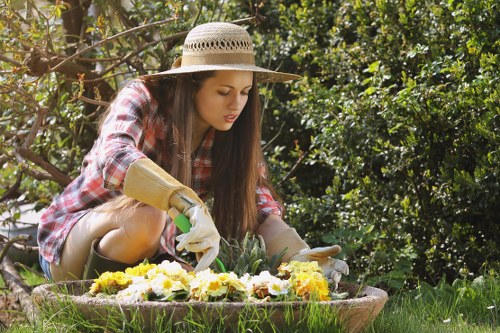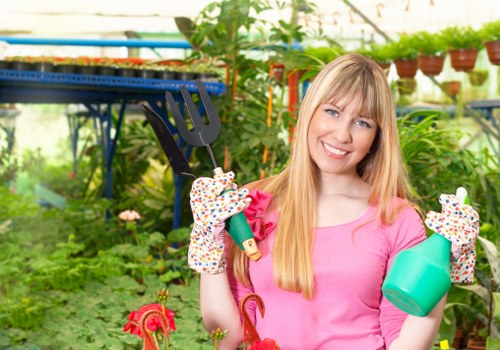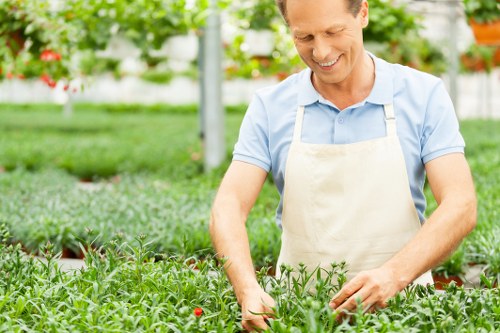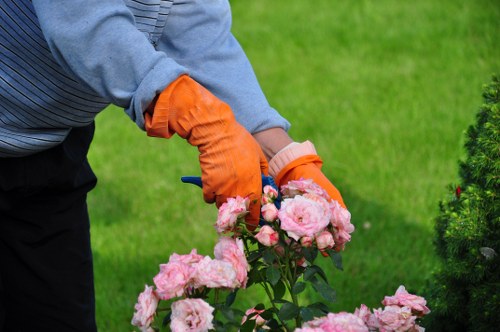Landscape Gardening in Cranford

Transforming your outdoor space into a beautiful and functional landscape garden in Cranford can significantly enhance the aesthetic and value of your property. Whether you're looking to create a serene retreat or a vibrant area for entertaining, landscape gardening offers endless possibilities.
In Cranford, the climate and soil conditions present unique opportunities for diverse plant selections and garden designs. Local gardeners have access to a variety of native plants that thrive in the region, ensuring a sustainable and low-maintenance garden.
Proper planning is essential to achieving a successful landscape garden. This involves assessing your space, understanding your needs, and selecting the right plants and materials to create a cohesive and harmonious outdoor environment.

Planning Your Landscape Garden
Landscape gardening begins with careful planning. Start by evaluating the size and layout of your outdoor space. Consider factors such as sunlight exposure, soil type, and existing vegetation. These elements will influence your plant choices and garden design.
Set clear objectives for your garden. Do you want a space for relaxation, gardening, or outdoor gatherings? Defining your goals will help guide your design decisions and ensure the final result aligns with your vision.
Creating a detailed garden plan is crucial. Sketch out your ideas, noting the placement of plants, structures, and other features. This plan will serve as a roadmap during the implementation phase, helping you stay organized and focused.
Selecting the Right Plants
Choosing the appropriate plants is a key aspect of landscape gardening in Cranford. Opt for native species that are well-suited to the local climate and soil conditions. Native plants typically require less maintenance and are more resistant to pests and diseases.
Incorporate a mix of evergreen and deciduous plants to add texture and color throughout the year. Consider the growth habits and mature sizes of plants to ensure they complement each other and fit well within the available space.
Integrate seasonal flowers and plants to maintain interest and vibrancy throughout the year. This approach ensures that your garden remains attractive even as some plants go dormant.

Design Elements in Landscape Gardening
Incorporating various design elements can elevate the appeal of your landscape garden. Features such as pathways, patios, and fences add structure and define different areas within your garden.
Hardscaping elements like stone paths, wooden decks, and metal sculptures provide visual interest and functionality. These features complement the natural elements and enhance the overall aesthetic of your garden.
Incorporating water features, such as ponds or fountains, can create a calming atmosphere and attract wildlife. The sound of flowing water adds a soothing backdrop to your outdoor space.
Lighting and Irrigation
Proper lighting is essential for both aesthetic and practical purposes. Use a combination of ambient, task, and accent lighting to highlight key features and ensure safety during evening hours.
An efficient irrigation system is vital for maintaining a healthy garden. Consider installing drip irrigation or sprinklers that can be programmed to meet the specific watering needs of your plants.
Implement rainwater harvesting techniques to conserve water and promote sustainability. Collecting and storing rainwater reduces your reliance on municipal water sources and benefits the environment.

Sustainable Practices in Landscape Gardening
Adopting sustainable practices is increasingly important in landscape gardening. Implement eco-friendly techniques to minimize your ecological footprint and promote a healthy environment.
Use organic fertilizers and compost to enrich the soil without introducing harmful chemicals. Composting kitchen and garden waste provides nutrient-rich material that supports plant growth.
Choose native plants and drought-tolerant species to reduce water consumption and support local biodiversity. These plants are well-adapted to the local climate and require less maintenance.
Reducing Waste and Recycling
Minimize waste by reusing materials and recycling garden debris. Wooden pallets, old bricks, and other recycled materials can be repurposed into garden structures and decorative elements.
Implement mulch around plants to retain moisture, suppress weeds, and improve soil health. Organic mulches decompose over time, adding valuable nutrients to the soil.
Composting yard waste not only reduces landfill contributions but also provides a rich soil amendment for your garden. This practice promotes a closed-loop system, enhancing sustainability.

Choosing the Right Landscape Gardening Services in Cranford
Selecting a professional landscape gardening service can make a significant difference in the success of your garden project. Experienced landscapers understand the local climate, soil conditions, and plant varieties that thrive in Cranford.
Look for services that offer a comprehensive range of landscaping solutions, including design, installation, and maintenance. A full-service provider ensures that every aspect of your garden is well-managed and cohesive.
Check reviews and testimonials to gauge the quality of service and customer satisfaction. A reputable landscaping company will have a portfolio of successful projects and positive client feedback.
Cost and Budgeting
Establish a realistic budget for your landscape gardening project. Discuss your financial constraints with your chosen service provider to ensure that your vision aligns with your budget.
Obtain multiple quotes and compare the services offered. Transparency in pricing and clear communication about costs prevent unexpected expenses and ensure a smooth project execution.
Investing in quality materials and professional services may have a higher upfront cost but can lead to long-term savings through durability and lower maintenance requirements.
Maintaining Your Landscape Garden
Proper maintenance is essential to keep your landscape garden in Cranford looking its best year-round. Regular upkeep ensures the health of your plants and the overall appearance of your outdoor space.
Develop a maintenance schedule that includes tasks such as pruning, weeding, and fertilizing. Consistent care prevents overgrowth and promotes robust plant growth.
Monitor for pests and diseases, addressing issues promptly to prevent widespread damage. Integrated pest management techniques can help manage pests without relying heavily on chemical interventions.
Seasonal Care Tips
Adapt your maintenance routines to seasonal changes. In the spring, focus on planting new growth and preparing the garden for the warmer months. Summer requires regular watering and vigilance against pests.
Fall is the time for harvesting, pruning, and preparing plants for winter. Protect sensitive plants from frost and provide adequate mulch to insulate the soil.
During winter, minimize plant stress by providing shelter and reducing walking on frozen ground. Proper winter care ensures a healthy start for the garden in the spring.
Contact us today to transform your Cranford garden into a stunning landscape that you'll enjoy year-round!